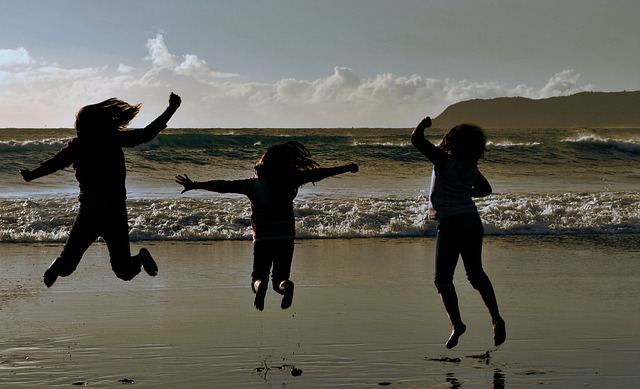I love to move; I derive endless pleasure and reams of personal insight from it. I practice several choreographed and un-choreographed forms of movement and am always avid to experiment with new forms. It hasn’t always been this way...
I love to move; I derive endless pleasure and reams of personal insight from it. I practice several choreographed and un-choreographed forms of movement and am always avid to experiment with new forms.
It hasn’t always been this way for me, however.
Being an inveterate perfectionist, moving wasn’t always a source of childish delight and wide-eyed wonder at my seemingly endless movement possibilities. I used to (and still do if I’m not wide-awake to my habits) turn every activity and movement challenge into a competition, where the only ephemeral joy came from beating myself or others in “getting there” (all thoughts on the finish line and none on the journey). The prize for “getting there” (wherever that may be) was some cheap and short-lived admiration from peers and superiors; the price, on the other hand, was steep and long-lived.
No joy ever came from within after conquering one of these podiums; it was simply never good “enough”.
The fact that outside praise soon died away, and to get my fix once again I needed to surpass, or at minimum up-keep, my previous achievement level, seemed only to prove that I needed to do more and better (whatever that may be).
Still, no joy came from within, no praise came from within, and the constant struggle to do more and be better ended up corroding my belief in the truthfulness of outside praise and admiration. What I didn’t give myself, I couldn’t receive from others, even if it was showered upon me (which it never really was anyways).
Then, one good day, I was inadvertently presented with my first somatic movement practice. And little by little I got hooked on a completely different perspective on what it means to move and be moved.
Nowadays, whenever I “practice movement”, I am more interested in becoming aware of how I choose to move than in getting anywhere in particular.
Becoming aware of how I move throws light on my movement habits: how I always tend to unconsciously choose by default the same set of movement options, even when they are perhaps not the best suited to the present situation.
Therefore, in my personal movement investigations I present myself with simple movement challenges in a safe environment. I do so in order to teach myself how to move in and out of these challenges in different ways at any time, and thus widen the range of movement choices available to my conscious mind.
As I become aware of my growing number of movement options, movement habits loosen some of their vice grip on my actions: they become just one option among many from which I can consciously choose (if I’m aware enough to do so).
Movement has hence become a path of self-development. Nowadays, whenever I “exercise” (be it running, doing Pilates or any other sport or gymnastics), my focus is not primarily on “exercising my muscles” (although that is an added benefit) but first and foremost on the cyclical process of becoming aware of how I move, evaluating if the current choice is the best option available, making any necessary adjustments (based on my personal investigations) and listening in again to my movement quality.
This process of “listening-in”, of entering into a nurturing dialogue with myself through movement and sensation, through thought and image, has brought forth the only emotion worth deriving from any action: JOY.
Why this emphasis on JOY you may ask.
Well, a friend and teacher once told me that in the Vedic tradition the three attributes of God are Sat, Chid and Ananda, which in worldly terms would be something like: knowing all, living forever (aka being connected to all things) and being always in a state of bliss. She also said that for us humans it is difficult to realize when we are connected to eternal knowledge and eternal life, but we do come equipped with the capacity to know when we are connected to eternal bliss, and that is in the feeling of joy: an emotion that wells up from deep within and expresses itself in body and mind.
When Joy is present, when we experience a glimpse of Ananda, we are also experiencing a glimpse of eternal knowledge (Sat) and eternal life through the connection to all things past, present and future (Chid).



